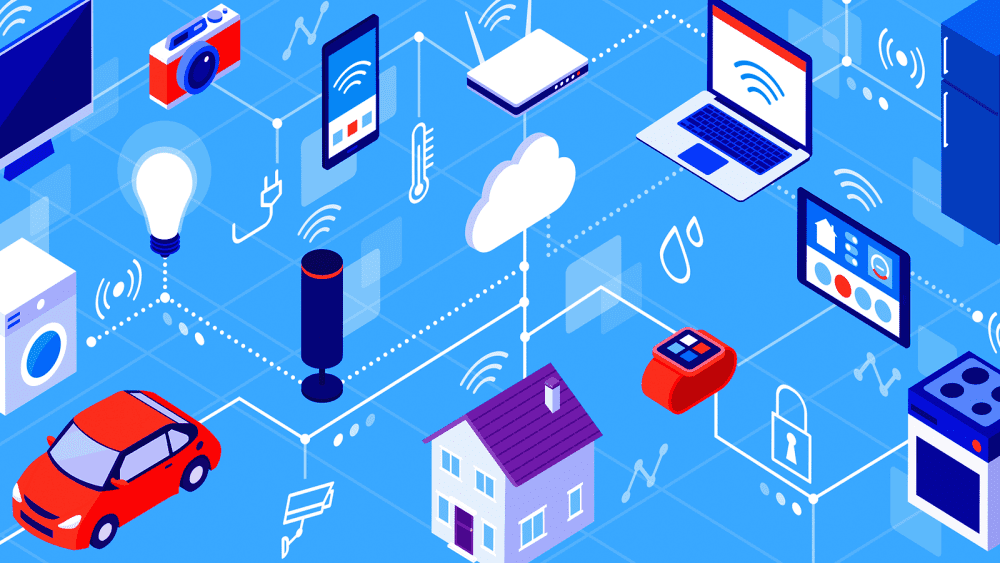From smart thermostats and security cameras to connected machinery and wearables, IoT (Internet of Things) devices are everywhere. They’ve made businesses more efficient, automated countless tasks, and brought convenience to everyday operations. But with every new connection comes a new vulnerability.
As more devices come online, the surface area for cyberattacks expands—offering more entry points for bad actors. In this piece, we’ll look at how IoT is creating fresh security challenges and how AI (artificial intelligence) is playing a vital role in keeping those risks in check.
Why IoT Devices Are Easy Targets
Most IoT devices weren’t designed with security as a top priority. That’s a big problem. Here’s why they’re often vulnerable:
- Weak default passwords that users rarely change
- Outdated firmware that never gets patched
- Insecure communication protocols lacking encryption
- Limited processing power, which makes running advanced security tools difficult
These devices are also typically scattered across different networks, making them harder to monitor and control. For cybercriminals, that’s a perfect recipe.
How IoT Expands the Cyber Attack Surface
Think of every IoT device as a digital doorway. Even if one looks harmless—like a connected printer or thermostat—it can be exploited.
Here are some common attack scenarios:
- Lateral movement: Attackers get into a less-protected device, then move sideways across the network to more valuable systems
- Botnet attacks: Compromised IoT devices are grouped into massive Distributed Denial of Service (DDoS) attacks
- Data theft: Devices that collect or transmit sensitive data, like health monitors or point-of-sale systems, can leak information
- Surveillance: Attackers can eavesdrop via microphones or cameras to spy on private conversations
And it’s not just large enterprises that are affected—small and mid-sized businesses are increasingly being targeted too.
Why Traditional Cybersecurity Tools Fall Short
Most standard cybersecurity tools were built to protect desktop computers and servers—not networks filled with hundreds or thousands of IoT devices.
Typical problems include:
- Lack of visibility—it’s hard to even know which devices are connected
- Poor scalability—traditional systems can’t keep up with the data IoT devices generate
- No real-time analysis—threats often go undetected until it’s too late
That’s why businesses need smarter tools—and this is where AI steps in.
How AI Can Help Secure IoT Environments
AI offers a scalable, efficient, and intelligent way to secure IoT ecosystems. It doesn’t just detect known threats—it learns and adapts.
Real-Time Threat Detection
AI-powered systems monitor all device activity across your network. They flag any suspicious behaviour—like a smart fridge trying to access financial records—and alert your team instantly.
Predictive Analytics
Using historical data and pattern recognition, AI can forecast which devices are most at risk. This allows IT teams to patch vulnerabilities before they’re exploited.
Anomaly Detection
Instead of relying on static rules, AI learns what “normal” looks like on your network. When something deviates—like a wearable sending data at midnight—it knows to raise a red flag.
Automated Response
Some advanced AI systems can take immediate action, such as isolating a compromised device or shutting down its access before damage spreads. These tools save valuable time and resources, while dramatically improving response times.
Building a Smarter IoT Security Strategy
To truly protect IoT systems, businesses need a layered security approach—one that combines best practices with AI-powered tools.
Here’s a checklist to get started:
- Segment the network to separate IoT devices from core systems to limit access
- Update regularly with firmware patches and security updates
- Avoid default credentials by using unique, strong passwords and enabling two-factor authentication
- Monitor continuously using AI tools to detect and respond to suspicious activity in real time
- Track devices with an updated inventory of all connected devices, their status, and ownership
- Invest in AI tools that offer predictive analytics, behavioural insights, and automated defense
For organisations looking to upgrade their cyber defenses, choosing the right network security monitoring tools is essential. These tools help track device behaviour, block threats, and support real-time decision-making across distributed IoT environments.
What About Edge AI?
As networks evolve, more processing is happening at the edge—right on the device itself, rather than in the cloud.
Edge AI allows devices to make security decisions locally, without needing to send data back and forth. That means:
- Faster detection of threats
- Reduced bandwidth usage
- Better data privacy
It’s a smart way to secure IoT environments in real time, especially where speed and autonomy matter—like in manufacturing plants, hospitals, and critical infrastructure.
Final Thoughts: Don’t Let Smart Devices Create Dumb Risks
IoT technology is transforming industries—but it’s also transforming the way cyberattacks happen. Every connected device is a potential target.
That’s why we can’t rely on outdated tools and passive monitoring. AI offers a smarter, faster, and more effective way to protect your growing network of devices.
So if your business is expanding its IoT footprint, don’t leave security as an afterthought. Combine structured policies with AI-driven insights—and the right network security monitoring tools—and you’ll be better equipped to handle what’s next.
Explore Textify’s AI membership
Need Data? Explore AI Search Engine for Data Lovers
Explore insights with Textify Analytics
